Steeped in history with a landscape that encompasses beaches and soaring mountains, Turkey has acted as the gateway between Europe and Asia for thousands of years. Being a place of trade and of exchanging cultures has made Turkey a richly diverse country. The point where East meets West, the wealth of culture and breadth of influences has left its mark and is revealed in the country’s mouthwatering culinary landscape, as well as in the innumerable religious monuments and archaeological sites.
Istanbul, once the capital of the Byzantine and Ottoman Empires, features prominently in most travel plans but there are many more great destinations. You could enjoy your time here staying in boutique hotels inside caves and floating in hot air balloons above the otherworldly landscape of Cappadocia, wandering in the midst of the Greco-Roman world in Ephesus, or simply soaking up the sun in the luxury beach resorts along the Aegean Sea. Here’s a look at the best places to visit in Turkey:
10. Ankara
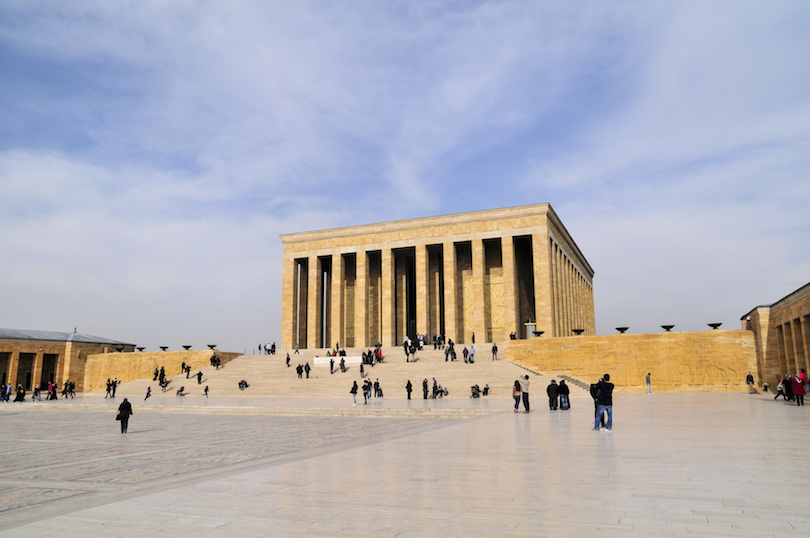
Turkey’s capital city, Ankara, is a sprawling, modern city home to government buildings, commercial businesses, universities and foreign embassies. Located right in the center of the country and the Anatolia region, Ankara is an important transportation hub, linking nationals and tourists alike to other major destinations in Turkey. However, Ankara is not all business. This bustling city also offers a few historic sites and some arts and culture.
An old city once inhabited by various cultures including Hittite, Greek, Roman, Byzantine and Ottoman, Ankara is riddled with ancient structures and ruins reflecting its history. Some of the most notable of these are the Temple of Augustus, the Citadel, and a Roman Theatre. Numerous historic mosques can also be found throughout the city. An important 20th century landmark, Anitkabir, is a mausoleum housing the tomb of Turkey’s first President, Mustafa Kemal Atatürk.
Ankara boasts a lively arts and culture scene with a large concentration of theaters and museums, including the Museum of Anatolian Civilizations, which houses more than 200,000 objects. Traditional markets and modern malls provide fantastic shopping choices where items such as fresh produce, spices, carpets and electronics can all be purchased.
9. Mardin
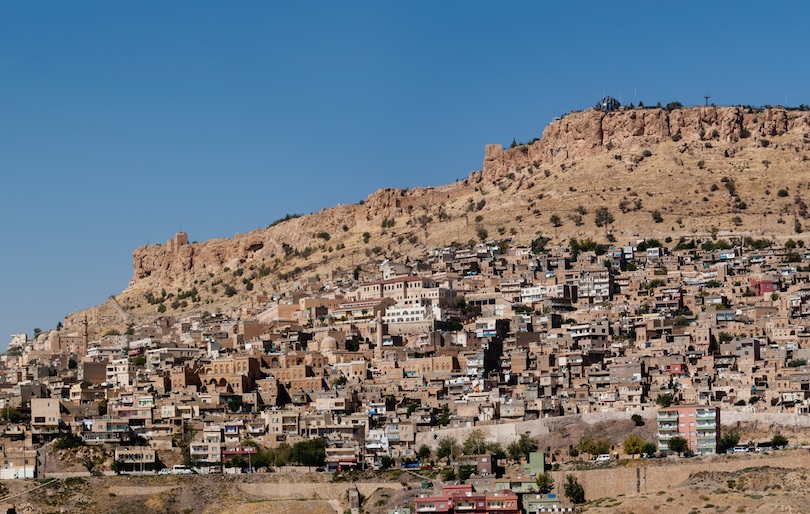
Perched on a strategic hilltop overlooking the plains of Mesopotamia in southeastern Turkey, Mardin is the capital of the Mardin Province. One of the oldest settlements in the region, Mardin is best known for its cultural diversity and Old City of sandstone buildings that cascade down the hill.
Mardin’s Old City is easily toured by walking. The maze of meandering streets leads visitors along terraced houses and popular sites like Deyrü’z-Zafaran Monastery, one of the oldest monasteries in the world, and the Sultan Isa Medresesi, a medieval monument that once served as an astronomical observatory. Zinciriye Medresesi, a 14th century Islamic school, features beautiful courtyards and art works.
The Great Mosque, with its soaring minaret, is hard to miss. Although closed to the public, the citadel presents fantastic photo opportunities. Throughout the Old City is a myriad of shops selling the likes of pottery, silverware, leather and traditional headdresses.
8. Konya
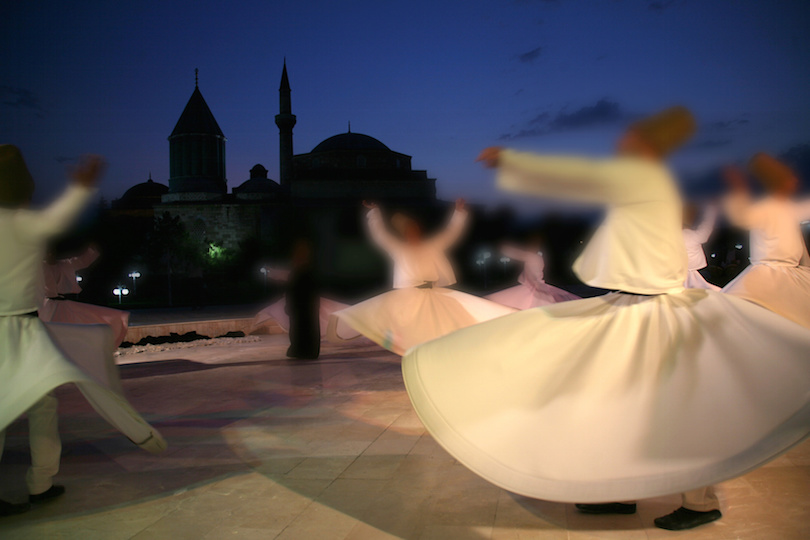
One of the oldest cities in the world and best known for its remarkable Seljuk architecture and Whirling Dervishes, Konya is a large city in Turkey’s Central Anatolia Region. In the 12th and 13th centuries, Konya prospered as a capital city under the rule of the Seljuk Dynasty. Today, attractive buildings from that era can still be admired such as the Alaeddin Mosque, which houses the tombs of several sultans. Another popular example is the Ince Minare Medrese, now a museum displaying artifacts from the Seljuk and Ottoman eras.
Although in ruins, the Seljuk Palace is also worth a visit. A modern day architectural attraction is the Seljuk Tower, one of the tallest skyscrapers in Turkey, featuring a revolving restaurant at the top two floors.
In the 13th century, Konya was the home of the Persian theologian and Sufi mystic, Rumi. His tomb, the Mausoleum of Rumi, with its neighboring Melvana Museum, is a must-see site in Konya. Rumi’s followers founded the Mevlevi Order, which are also known as the Whirling Dervishes due to their famous religious ceremonies in which they spin around and around on the left foot while wearing white, billowing gowns. These ceremonies, also known as Sama, can be observed weekly at the Mevlana Cultural Centre.
Konya also offers beautiful green spaces and parks such as Alaeddin Hill, in the city center, and the Japanese Park with its lovely pagodas, waterfalls and ponds.
Because Konya is one of Turkey’s more conservative cities, bars and nightclubs are not as plentiful. However, some hotels and cafes do offer alcoholic drinks.
7. Antalya
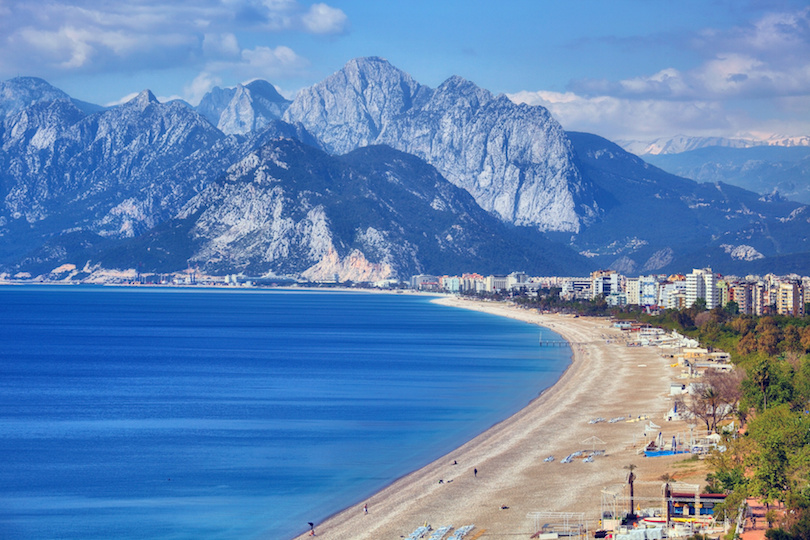
Nestled along the beautiful Turkish Riviera on the Mediterranean coastline, Antalya is a large, vibrant city welcoming tourists with numerous resorts, hotels, bars and restaurants. Spectacular scenery frames the city with gorgeous beaches and lush green mountains dotted with ancient ruins. From swimming and sailing to mountain climbing, sightseeing and family fun, Antalya offers something for everyone.
A walk around Kaleiçi, the Old Quarter, offers a step back into the city’s ancient past with views of the old city walls, Roman gates, maze-like streets and historic structures that include the Clock Tower and beautiful, old churches, mosques and temples. At the heart of the Old Quarter is the Cumhuriyet Square, surrounded by shops, cafes, Turkish baths and street performers.
Antalya’s main beaches, Konyaalti and Lara, offer white sands, water sports, resorts, bars and restaurants. Nearby the beaches are water parks, amusement parks and a zoo. Several museums exhibit artifacts and relics from the area, including the award-winning Antalya Museum.
6. Marmaris
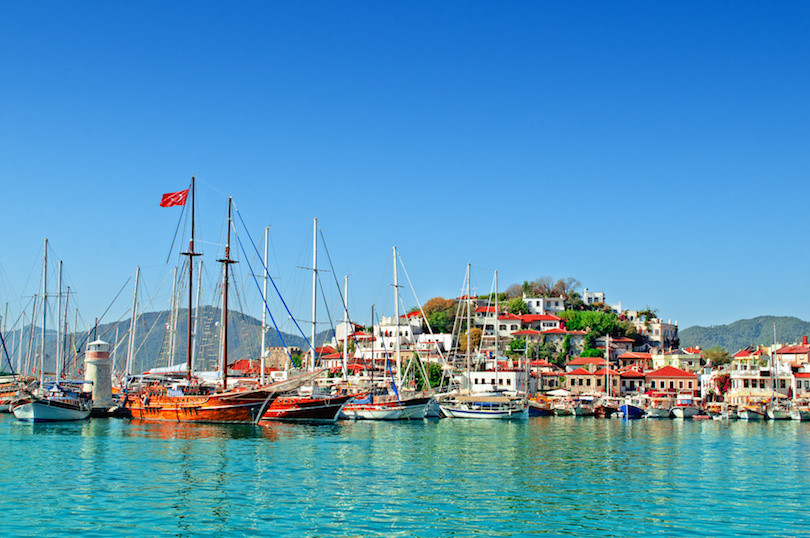
One of Turkey’s most popular seaside resorts, Marmaris is a picture-perfect setting of pine-clad mountains, sandy white beaches, turquoise waters and historic architecture. Located along the Turkish Riviera in southwest Turkey, this stunning cruise port is a tourist paradise with exceptional sightseeing opportunities, water sports, fantastic dining and buzzing nightlife.
Marmaris presents so much to see and do that visitors will be spoiled for choice. A walk along the cobblestone streets of the old quarter offers attractive architecture and a visit to the 16th century Castle of Suleyman the Magnificent. Various boating tours take visitors exploring around the picturesque bays and neighboring villages.
Horse safaris canter through lush pine forests, orange groves, traditional villages and around untouched bays and stunning waterfalls, while jeep safaris present off-the-beaten-track adventures.
Marmaris also features water parks for the whole family and Turkish baths for total pampering and relaxation. If that is not enough, there are a number of day trips from Marmaris to outstanding destinations like Dalyan, Ephesus, Pamukkale and Cleopatra Island.
The nightlife scene in Marmaris is one of Turkey’s most exciting. There are hundreds of restaurants featuring cuisines from all over the world from fast food to fine dining. Bars and clubs are found throughout the city and along the beaches. Not to be missed are the Turkish Night Show venues, which feature traditional Turkish food, mezes and belly dancing.
5. Side

A major port in ancient Pamphylia and occupied by Alexander the Great in 4th century BC, Side today is a picturesque town of classic ruins and modern day resorts overlooking sandy white beaches. Located on Turkey’s Mediterranean Coast in the Antalya Province on a small peninsula, Side offers fantastic sightseeing, nightlife and outdoor adventure.
Side’s star attraction is an excavated site of ancient Hellenistic and Roman ruins that include the remnants of a colossal amphitheater, an agora, a Byzantine basilica, public baths, marble columns and various temples. The Roman baths are now restored to house a museum, which displays a number of Roman statues and artifacts. Overlooking the beach, the Temple of Apollo is a spectacular sight, especially at sunset.
Featuring narrow streets and attractive gardens, the charming town of Side offers many restaurants ranging from delis and pizza shops to upscale dining in a variety of cuisines. Just outside of town, the Manavgat River offers boat tours, white water rafting and impressive waterfalls.
4. Bodrum
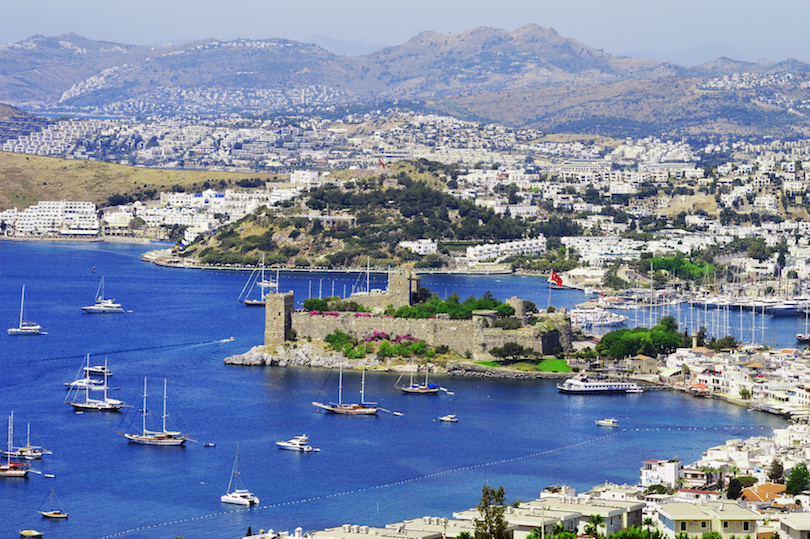
Located in the Mugla Povince in the southern Aegean region of Turkey, Bodrum is the site of the ancient fortified city, Halicarnassus, which was once home to marble buildings, temples, statutes, paved streets and the Mausoleum, one of the Seven Wonders of the Ancient World.
After falling into ruins, the city remained a quiet fishing village until the 20th century when Turkish intellectuals brought popularity to it through their writings. Today, Bodrum’s intriguing ruins, stunning beaches and cliff-top resorts attract people from all over the world.
On Bodrum’s eastern side, tourists will find a beautiful beach overlooking brilliant blue water. Near the beach are plenty of cafes, bars and nightclubs. On the western side of town is the marina, shopping centers and restaurants.
No visit to Bodrum would be complete without seeing the Castle of St. Peter, also known as Bodrum Castle. Built from 1402 by the Knights Hospitaller it now operates as a museum. Other sights include the last remains of the Mausoleum, and ancient amphitheater and the Myndos Gate, which was once the scene of a bloody battle during a siege by Alexander the Great.
Besides sightseeing, other things to see and do in Bodrum include the award-winning Bodrum Museum of Underwater Archaeology which is housed inside Bodrum Castle, historic windmills, Turkish saunas and mud baths, windsurfing, scuba diving and boat tours that feature nightclubs and glass-bottomed dance floors.
3. Ephesus

Europe’s most complete classical metropolis, Ephesus is an ancient site located in Aegean Turkey. By the 1st century BC, Ephesus was one of the largest cities in all of the Roman Empire, boasting one of the Seven Wonders of the Ancient World, the Temple of Artemis. The ruins of Ephesus are well preserved and contained within a large archaeological site, making it one of Turkey’s most popular tourist attractions.
Ephesus was declared a Roman settlement in 133 BC, although it did not reach its peak until some 200 years later. At one point, when the city was the capital of Roman Asia Minor, Ephesus housed more than 250,000 permanent residents. St.Paul lived in Ephesus, fostering Christianity among many other religions. With the decline of the harbor of Ephesus, and the sacking of the city by Germanic Goths in the third century, Ephesus began its decline.
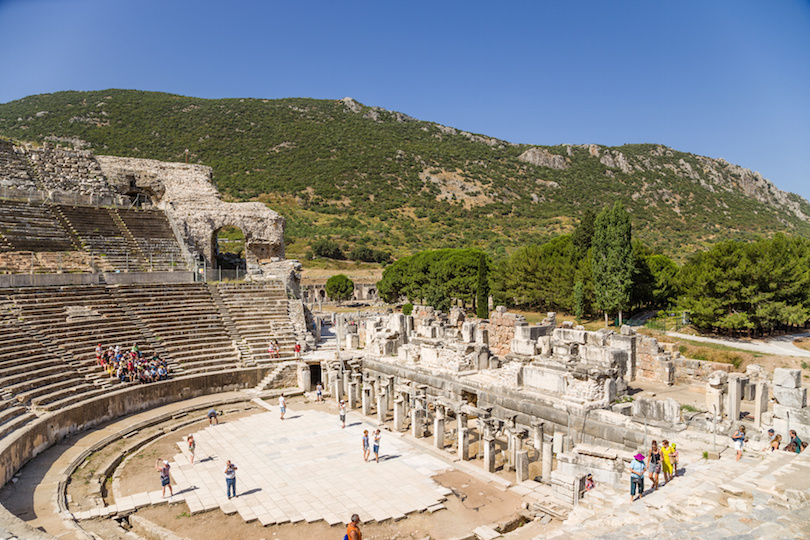
For roughly 1,500 years, Ephesus was all but forgotten. The remnants of this incredible classical city were hidden from the world until the 1860s, when an international team of archeologists began unearthing the ruins. Today, less than 20 percent of Ephesus has been excavated, but it is still one of the largest accessible archeological sites in the world.
Without question, the most famous structure in Ephesus is the Temple of Artemis. The temple was once the largest on the planet, showcasing just how important the city of Ephesus was. Unfortunately, the temple itself was largely destroyed around the fifth century, but it is still possible to tour the ruins.
Some of the most recently excavated attractions in Ephesus, and certainly some of the most popular, are the Terraced Houses. These were the homes of the richest residents of Ephesus in approximately the first century, and they were built in a modern Roman style.
Remarkably, some of the homes had hot and cold baths, marble floors and even heating systems. On the walls, you can spot unusual artwork, mosaics and even love poems scrawled by hand.
No trip to Ephesus would be complete without seeing the famed Library of Celsus. Built in 123 AD, the library was once of the largest libraries in the ancient world, coming in third after the libraries of Alexandria and Pergamum. The library has been restored, making it easier to see its two-story design, its columns and its capitals.
Be sure to admire the four statues that represent the four virtues. While these are now replica statues, and not the originals, you can still see Sophia, representing wisdom, Episteme, representing knowledge, Ennoia, representing thought, and Arete, representing goodness.
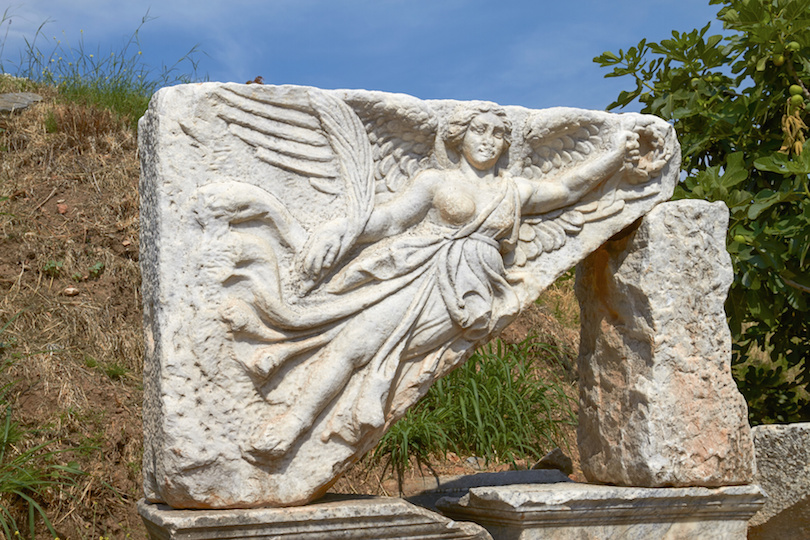
Just two miles from Ephesus is the town of Selçuk, where many visitors choose to spend time before or after exploring the ruins of Ephesus. In the center of Selçuk, you might want to stop and admire the Roman aqueduct that once supplied water to the city, or you could learn a little more about the archeology of the region by exploring the collections at the Museum of Ephesus. You can also browse at the market or pick up double knot carpets, the most popular souvenir from the area.
2. Cappadocia
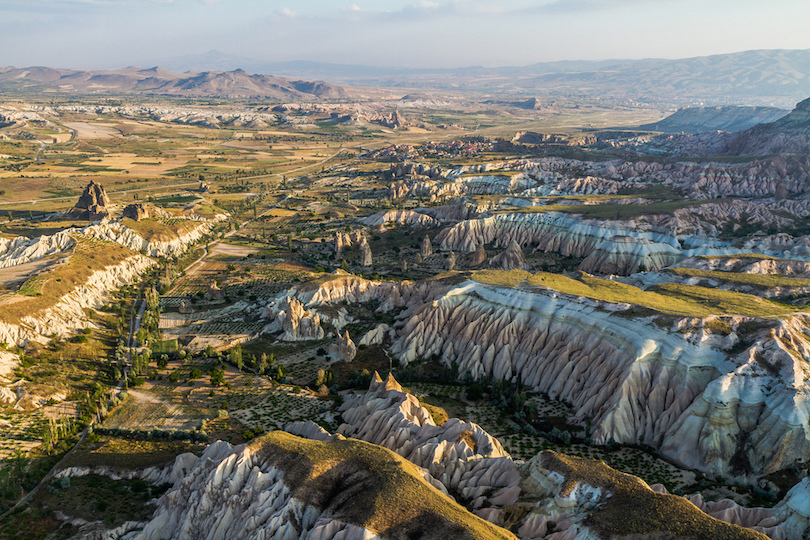
Situated in Central Anatolia of Turkey, Cappadocia is best known for its fairytale landscape of unusual formations resembling chimneys, cones, mushrooms and pinnacles. Natural processes such as ancient volcanic eruptions and erosion have all sculpted these odd formations over the ages, with some of them rising as much as 130 feet (40 meters) high. However, thousands of years ago, mankind added remarkable touches to the landscape by carving out houses, churches and underground cities from the soft rock.
Inhabited as early as 1800 BC, Hittites and other residents chiseled out underground tunnel complexes, seeking safety from invading Persians and Greeks. Much later in the 4th century AD, Christians, fleeing out of religious persecution from Rome, sought refuge in Cappadocia’s tunnels and caves. Today, the region’s natural wonders and historic sites all make it a popular destination.
While much of Cappadocia is located in the province of Nevsehir, some of the main towns in the region are Ürgüp, Göreme, Avanos, Ortahisar and Mustafapasa. Many of these towns offer hotels, restaurants, nightlife options and attractions such as museums, rock castles, fairy chimneys, underground tunnels, old Greek villages, monasteries and handicraft markets. Some of the caves in the region are actually hotels and cater to tourists.
Accommodation: Where to Stay in Cappadocia
1. Istanbul

Once serving as the capital of the Ottoman and Byzantine Empires, Istanbul today is the largest city in Turkey and one of the largest in the world. Istanbul stretches across both sides of the Bosphorus, a narrow strait that connects Asia and Europe, making it the only city in the world spanning two continents. Impressive architecture, historic sites, dining, shopping, nightlife and exotic atmosphere all make Istanbul one of the world’s top tourist destinations.
The Old City is where most of the city’s impressive historic sites are found, which include the Hagia Sophia, Blue Mosque and Topkapi Palace. Another important district is New City, known for its modern day attractions, skyscrapers and shopping malls. Beyoglu and Galata are popular zones for nightlife and entertainment, while the Bosphorus area is home to beautiful palaces, waterfront mansions and urban parks.
There is no shortage of exciting things to see and do in Istanbul. A shopping affair not to be missed is the Grand Bazaar, one of the world’s oldest and largest covered markets. Visiting a Turkish bath is also a great way to experience the local culture. The nightlife scene in Istanbul abounds in numerous restaurants, pubs and nightclubs to suit every budget and preference.
Accommodation: Where to Stay in Istanbul
